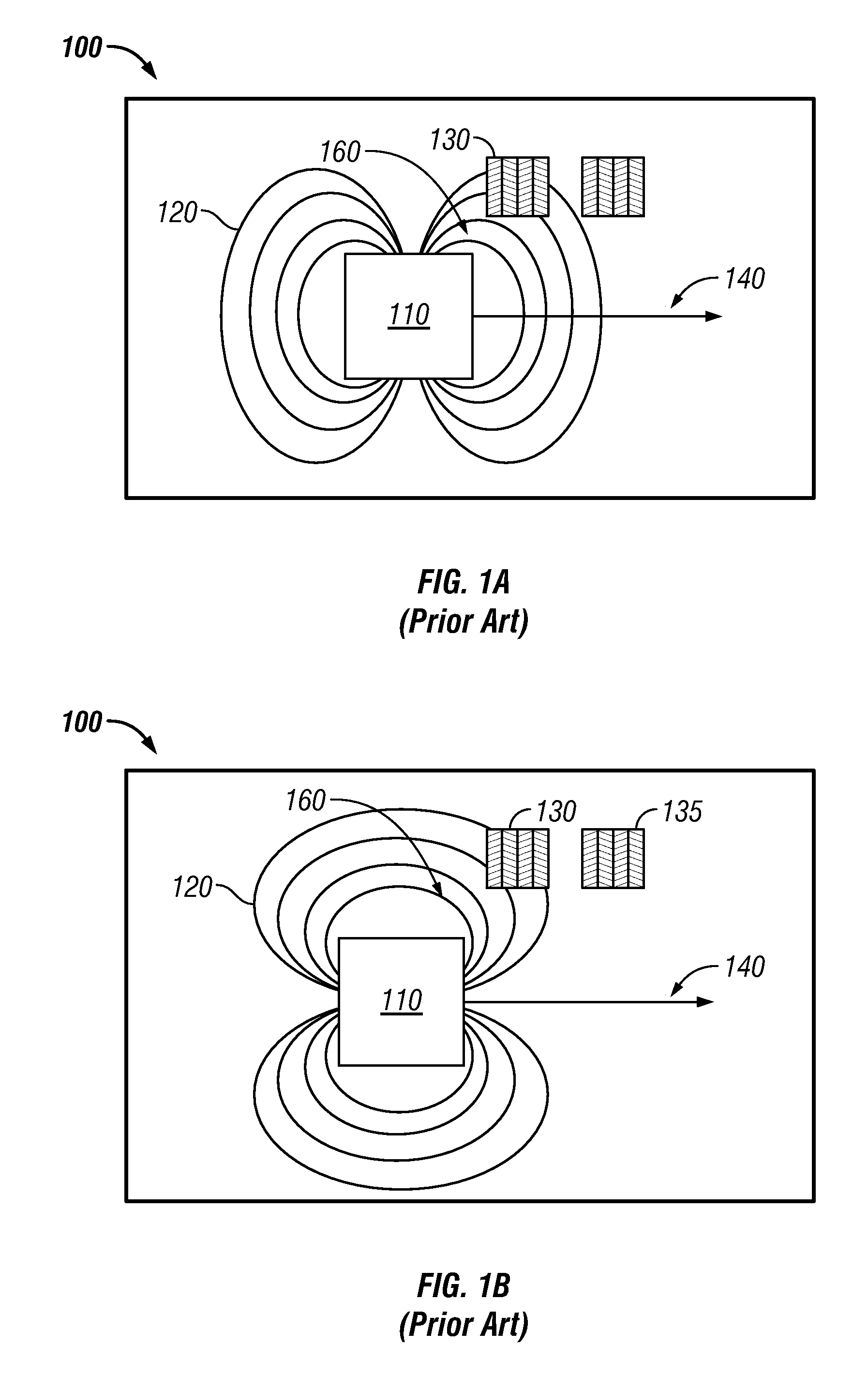AMR array magnetic design for improved sensor flexibility and improved air gap performance
an array magnetic and sensor technology, applied in the field of sensors, can solve the problems of decreasing the repeatability of signal changes, and achieve the effects of improving sensor flexibility, improving air gap performance, and improving sensor flexibility
- Summary
- Abstract
- Description
- Claims
- Application Information
AI Technical Summary
Benefits of technology
Problems solved by technology
Method used
Image
Examples
Embodiment Construction
[0022]The particular values and configurations discussed in these non-limiting examples can be varied and are cited merely to illustrate at least one embodiment and are not intended to limit the scope thereof.
[0023]FIG. 3 illustrates a perspective view of an AMR position sensing system 300, in accordance with a preferred embodiment. The AMR position sensing system 300 generally includes a magnet carrier 310, which holds two magnets 320 and 325. The magnets 320 and 325 are generally magnetized through the length of the magnets to create uniform magnetic flux lines 330 thereof. The AMR position sensing system 300 also includes an array of AMR position sensors 340 with AMR runners 345 located respectively external to first and second magnets 320 and 325. The magnets 320 and 325 enclosed in the magnet carrier 310 moves along a path 350 and generally located centrally above the array of AMR position sensors 340. Note that as utilized herein, the term “above” can refer to both vertical an...
PUM
 Login to View More
Login to View More Abstract
Description
Claims
Application Information
 Login to View More
Login to View More - R&D
- Intellectual Property
- Life Sciences
- Materials
- Tech Scout
- Unparalleled Data Quality
- Higher Quality Content
- 60% Fewer Hallucinations
Browse by: Latest US Patents, China's latest patents, Technical Efficacy Thesaurus, Application Domain, Technology Topic, Popular Technical Reports.
© 2025 PatSnap. All rights reserved.Legal|Privacy policy|Modern Slavery Act Transparency Statement|Sitemap|About US| Contact US: help@patsnap.com



